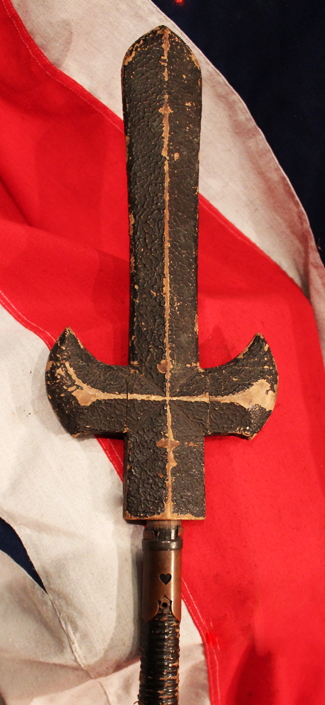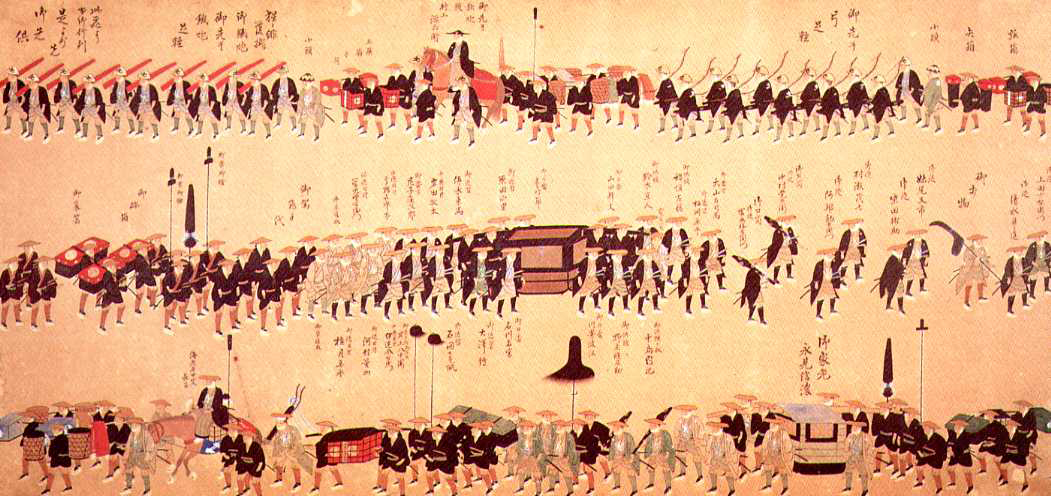A Japanese Edo Period Processional or Ceremonial Pole Arm Yari
Set on a very good mother o'pearl decorated haft. With a over lacquered blade cover. A yari on it's pole can range in length from one metre to upwards of six metres (almost 20 feet). The longer hafted versions were called omi no yari while shorter ones were known as mochi yari or tae yari. The longest hafted versions were carried by foot troops (ashigaru), while samurai usually carried a shorter hafted yari. Yari are believed to have been derived from Chinese spears, and while they were present in early Japan's history they did not become popular until the thirteenth century. The original warfare of the bushi was not a thing for "commoners"; it was a ritualized combat usually between two warriors who may challenge each other via horseback archery and sword duels. However, the attempted Mongol invasions of Japan in 1274 and 1281 changed Japanese weaponry and warfare. The Mongol-employed Chinese and Korean footmen wielded long pikes, fought in tight formation, and moved in large units to stave off cavalry. Polearms (including naginata and yari) were of much greater military use than swords, due to their much greater range, their lesser weight per unit length (though overall a polearm would be fairly hefty), and their great piercing ability. Swords in a full battle situation were therefore relegated to emergency sidearm status from the Heian through the Muromachi periods. Ceremonial yari were used for parades of Daimyo travelling through regions or traditional public ceremonies in the Edo era. MOP losses to haft.
Code: 19524
1150.00 GBP






